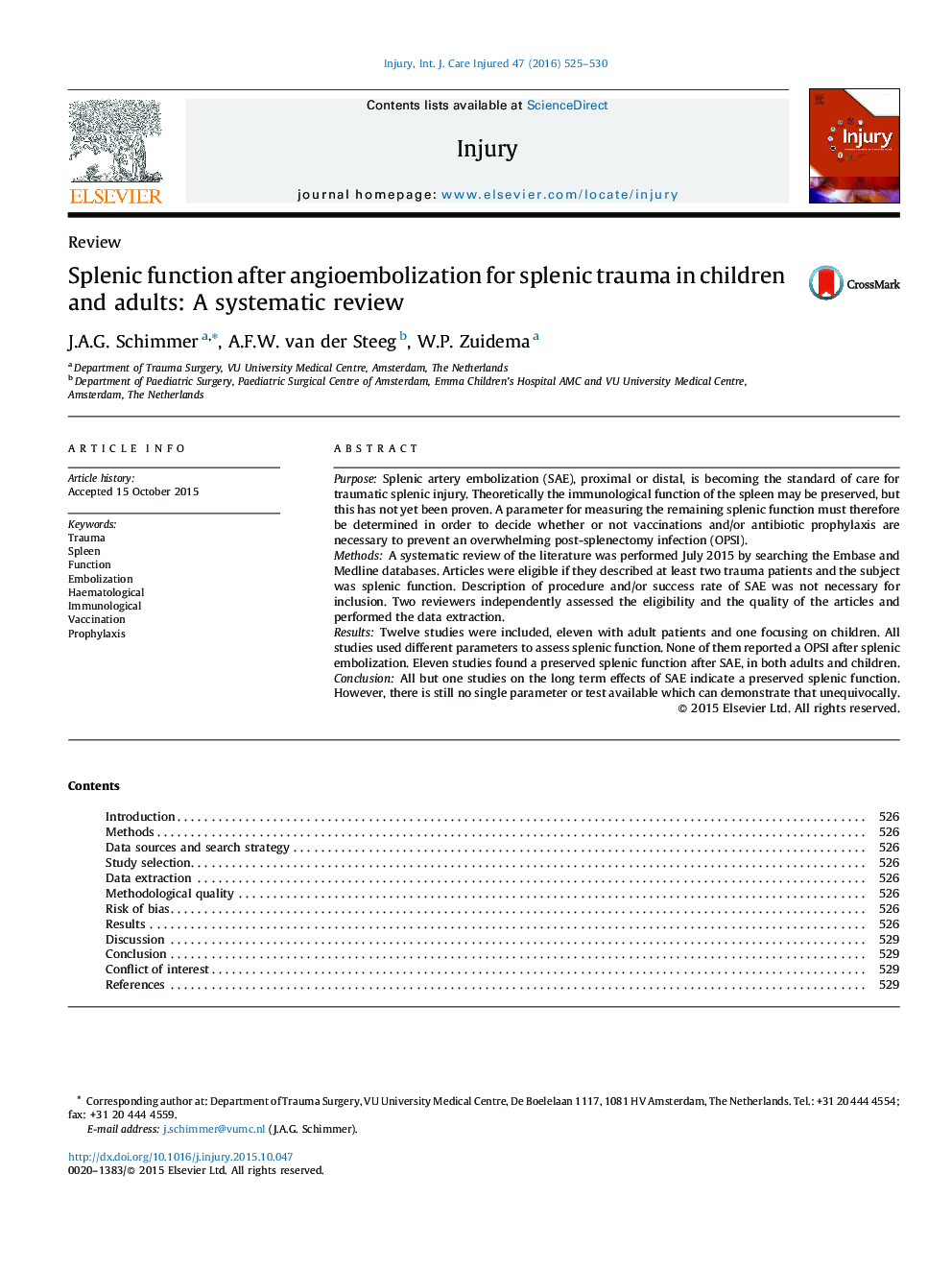| Article ID | Journal | Published Year | Pages | File Type |
|---|---|---|---|---|
| 3238676 | Injury | 2016 | 6 Pages |
PurposeSplenic artery embolization (SAE), proximal or distal, is becoming the standard of care for traumatic splenic injury. Theoretically the immunological function of the spleen may be preserved, but this has not yet been proven. A parameter for measuring the remaining splenic function must therefore be determined in order to decide whether or not vaccinations and/or antibiotic prophylaxis are necessary to prevent an overwhelming post-splenectomy infection (OPSI).MethodsA systematic review of the literature was performed July 2015 by searching the Embase and Medline databases. Articles were eligible if they described at least two trauma patients and the subject was splenic function. Description of procedure and/or success rate of SAE was not necessary for inclusion. Two reviewers independently assessed the eligibility and the quality of the articles and performed the data extraction.ResultsTwelve studies were included, eleven with adult patients and one focusing on children. All studies used different parameters to assess splenic function. None of them reported a OPSI after splenic embolization. Eleven studies found a preserved splenic function after SAE, in both adults and children.ConclusionAll but one studies on the long term effects of SAE indicate a preserved splenic function. However, there is still no single parameter or test available which can demonstrate that unequivocally.
